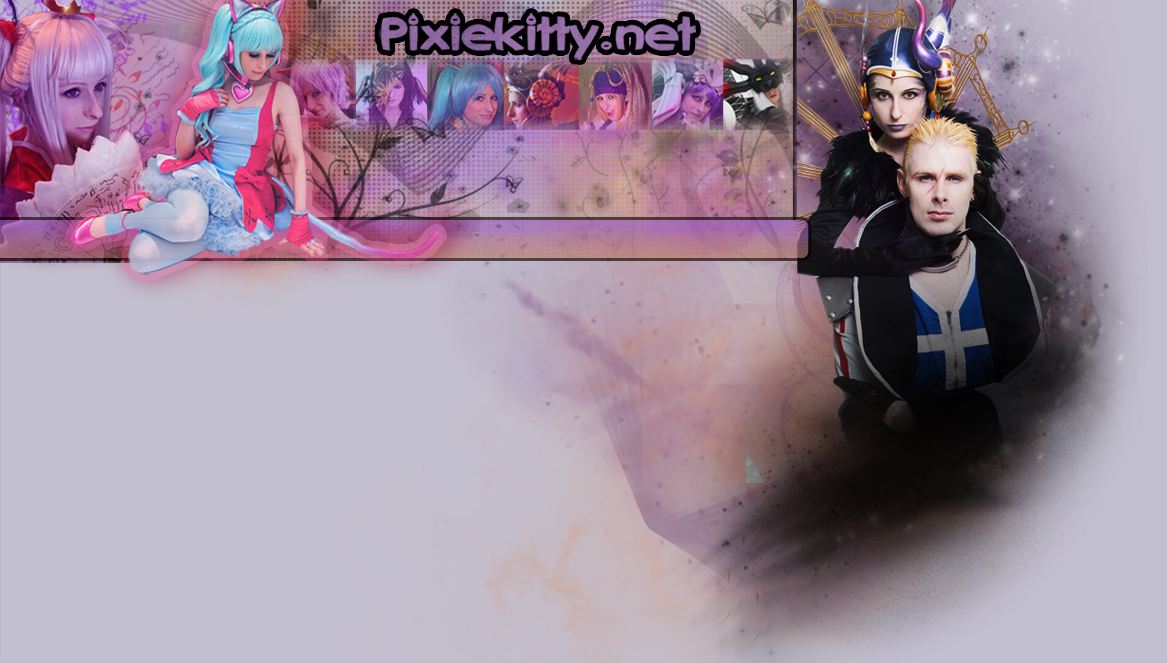
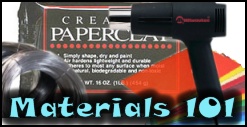
These are my personal materials of choice. I will go through my favorite materials that I use most often in my costumes with some basic how-to info and tips. I in no way claim that all of my techniques are the best nor the easiest way to accomplish stuff; these are just tips from what I have learned by trial and error.
Wire
What it is: Bendable aluminum or steel wire that comes in a coil.
Pros: Low cost, comes in many different gages
Cons: Hard to bend and cut if it's a lower gage (thicker)
Where to get it: Any hardware store such as Lowes or Home Depot
More info:
Remember: As the gage number goes down the thickness of the wire goes up. It's the opposite of what you would originally think.
I use this to make the basic shapes for armor, horns, and wings. You'll need wire cutters to cut through the wire, and some nice needle nose pliers to bend it! Obviously, as it gets thicker, it's much harder to cut...I usually have to make Neon Genocide cut the really thick gage wire for me!
I tend to use the thicker wire for big things like the outer borders of a base for a pair of wings like my Ultimecia or Lilith wings. Thinner wire is better for smaller things like the shape of a horn, or something like.
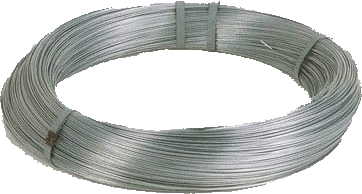
Rigid Wrap
What it is: Paper plaster
Pros: easy to use. generally quick drying, inexpensive, easy to find
Cons: Can get heavy if layered too much, not smooth when it dries, not sandable, requires a base to be sculpted over (I.E you can't mold it on its own), can be messy
Where to get it: Most craft stores like Michaels or A.C. Moore
More info:
This is great to cover a wire/base shape with something before you use Paper Clay on it. It's basically a mesh paper covered in dried plaster. You easily cut off the pieces you need with scissors, wet them, and then smooth them over your shape or base. The drying time varies according to how much water you use, how many layers, humidity etc..
It's especially important to let this stuff dry completely if you're planning on putting something like Paper Clay over it - or the clay will be damp for a loooong time - it could also compromise the sturdiness of your prop! I have read that you can microwave it for a few seconds to speed up drying, but I haven't tried this since I tend to use things like metal wire as a base (and metal is a BIG no no in a microwave!!!) I just try to make my stuff ahead of time so that I can be patient in letting it dry fully before moving on to the next step.
Foamie aka Craft Foam
What it is: Light-weight sheets of smooth foam
Pros: absorbs paint well, comes in multiple colors and sizes, easy to get and low cost, adheres very well with hot glue
Cons: Can crack after painted if it flexes too much, 2mm can tear easily if put under stress
Where to get it: Any craft store including Joann Fabrics, Michaels, and AC Moore. Of course online is always an option too.
More info:
It comes in various sheet sizes and thicknesses (2mm, 3mm, and 6mm). Though so far the only place I've readily found 3 and 6mm is at Joann Fabrics.
I tend to use 2mm for smaller projects and for making a basic pattern for armor pieces. It's also good for covering over something like Wonderflex. The 3mm is what I use for more sturdy projects such as my She-ra arm guards. 6mm is great to use for risen edges on armor and other projects that you need a sturdy flat base for
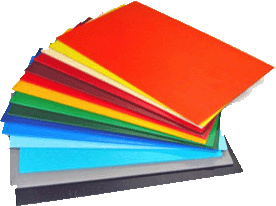
Creative Paper Clay:
What it is: Air-dry clay
Pros: easily sanded, lightweight, sticks to things with super glue well after dry, easy to mold,
no freakin' baking in an oven!, takes paint and gloss finish well
Cons: Can crack if dropped or put under too much pressure, a bit pricey, can take a long time to dry
Where to get it: A.C. Moore, Michaels, Hobby Lobby, Creativepaperclay.com
More info:
This is one of my favorite materials! It is an air-dry, sandable, and lightweight clay. I find it easier to work with if you have a small glass of water nearby - wet your fingers as you work with the clay to help keep it smoother and soft (this also cuts down on the amount of sanding you'll have to do after it's dry!)
For larger projects, always try to make a base to clay over, because making large things out of pure clay will take forever to dry and may crack as they dry (it's also a waste of clay and will be heavier).
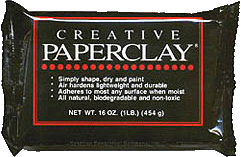
Wonderflex:
What it is: Fabric mesh embedded thermoplastic
Pros: Easy to mold, re-moldable if you make a mistake, no drying time-just a few minutes of cooling!
Cons: Expensive, sometimes hard to find
Where to get it: Cosplaysupplies.com, dazian.com
More info:
I adore this stuff! It opens up so many possibilities with armor and props that I would have otherwise had trouble making before I started using it! The easiest thing to use for heating it is a heat gun (the same kind used to strip paint off walls). Heat guns can be found in the hardware section of many stores. I got mine from the hardware section at Wal-mart for about $20.
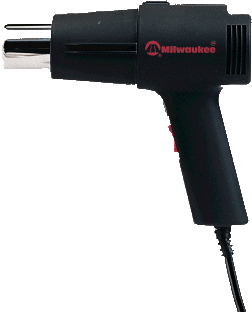
I start off by drawing out the shape I want with a sharpie, and then I lightly heat up the Wonderflex to make it easier to cut out the shapes with scissors.
For things that I want to be more sturdy, I will cut out two of the shapes I need and heat mold them together. This is especially important if you're planning on covering it with Paper Clay, because if the Wonderflex bends too much after the clay dries, the clay may crack.
Insulation foam:
What it is: Dense and lightweight foam used to insulate houses
Pros: large amount with low cost, easy to get, comes in different thicknesses, very light weight!
Cons: The pieces are large so bring a truck or have it cut into a few pieces, should be sanded outside-the dust is not good to breath in!, spray paint and many glues melt through it.
Where to get it: Lowes, Home Depot--pretty much any hardware store out there!
More info:
I love this stuff. It's another great thing to use for a base to clay over, and it's pretty easy to carve! You can actually sand this stuff with fine sandpaper if you're careful (sanding too hard can rip up some of the foam). The best quality this material has is LIGHTWEIGHT!! It's a good choice for large props or things that may have issues with being too heavy or unbalanced. I made the base of Rin and Miku's Vocaloid headphones from this stuff.
Sharpies or pencils can be used to draw out the shapes you need to cut out - I generally use a serrated/edged knife to cut. You can also use a heat knife that will cut through it like butter! After I get it into the shape I want, I usually coat it with some layers of acrylic Gesso and sand a few more times with a fine grain sand paper. I only use acrylic/latex based paints on this material since spray paint will eat right through it.
I generally use hot glue to attach it to things, but obviously hot glue melts through it-so that's not always the best option. I just tend to be very careful and apply very small amounts of the hot glue as to not melt through to the other side. There are various types of foam glues available-Tacky Glue is a safe glue to use on foam.
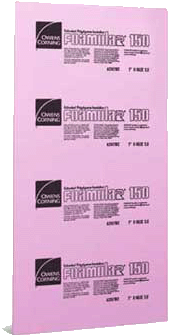
Upholstery Foam:
What it is: soft squishy foam used in chair and couch cushions
Pros: soft, easy to cut, easy to find, different thicknesses, can be bought in a pack or by the yard
Cons: can be a little expensive, can not be sewn through (it will rip)
Where to get it: Most fabric stores carry it
More info:
This is a good material to use for the base of animal feet over slippers, hats, and other various parts of your costume that you need to hold a special shape but still be bendable. Since it's so soft, it's comfortable against your body as a lining to a headpiece or armor.
Acrylic paint:
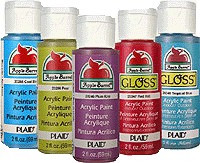
What it is: Latex-based non-toxic paint
Pros: low-cost, tons of colors, easy to find, safe to use on foam
Cons: Peels off of certain smooth surfaces such as plastic,
Where to get it: In just about any craft store or craft section at department stores.
More info:
This is the paint I use for most things. There are lots of different mediums you can use such as Textile medium (which is in the same section as the paint). I mix textile medium with this paint to made a flexible, washer/dryer safe fabric paint - this is great to use if you're coloring suede boots with paint!